Every fall, after the berries, grapes, and melons fade away, locavores in cool climates (that is, most of the United States) are left to make do with fruits from the Malus and, to a lesser extent, Pyrus families – i.e. apples and pears – for several months until strawberries return in the summer.
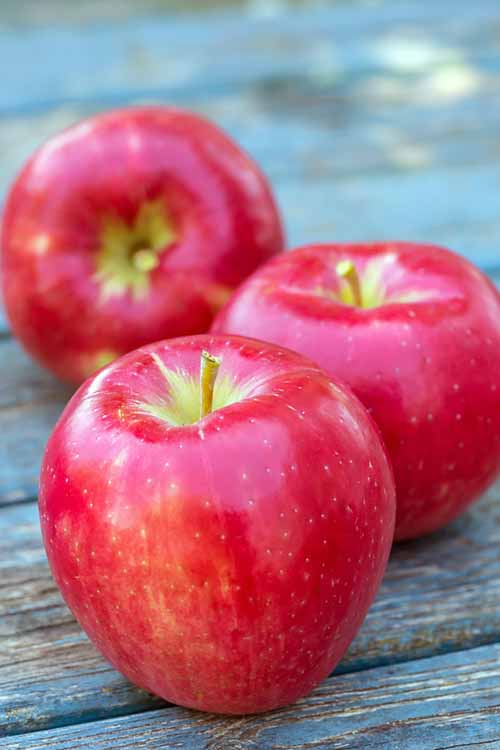
After the parade of summer fruits comes to a close, this might seem like a bummer. But when you know your varieties and can track down a source for interesting new types, relying on apples to meet your fruit quota in the fall and winter is an opportunity to make the most of the country’s second-most-consumed fruit.
Core Resources for Fall Fruit Lovers
My original idea when writing this piece was to cross-check my experience and common knowledge of different varieties with two of my favorite apple resources.
OrangePippin.com is the Internet’s go-to database of exhaustive apple data, with stats ranging from culinary uses to disease susceptibility to known country of origin and parentage on every apple I’ve ever tried to look up.
The other is Joan Morgan and Allison Richards’ excellent The New Book of Apples, a guide boasting more than 2,000 varieties listed in its extensive index as well as a history of the apple and beautiful color illustrations of many of the specimens it covers.
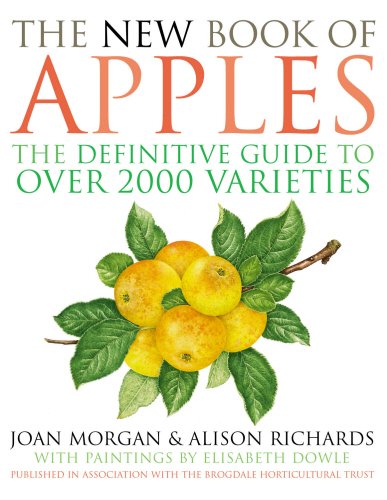
The New Book of Apples: The Definitive Guide to Over 2,000 Varieties
While it’s a little Anglo-centric – the UK loves its apples and seems to have had better luck with preserving rare, heirloom varieties than here in the States – it should be in every apple lover’s library.
Check it out yourself on Amazon.
Appealing Applications
At first, I struggled with how to categorize the fruit in this guide. By parentage, as many of the best-known varieties today are descended from two or three parent types? That seemed too wonky even for an apple nerd like me.
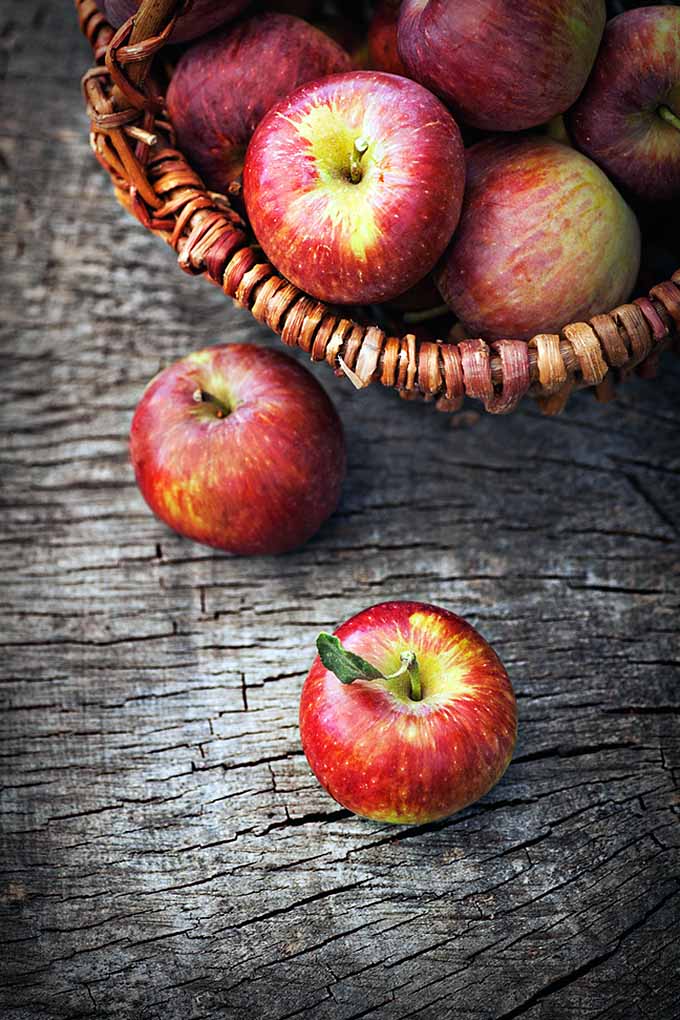
Should I categorize by use? I’ve always been taught that some types were best suited for certain preparations – you’d probably rather bring a Pink Lady along to crunch on at lunch than a Rome Beauty.
But as I researched, I noticed something: most apples are well-suited for most applications.
Indeed, I find myself crunching down on great cooking apples like York Imperial and Mutsu, which both have delicious sweet-tart fresh flavor, just as enthusiastically as bright, crispy juice bombs like Pink Lady or Honeycrisp.
Baking Them Best
I also took to heart some advice I received at a pie-baking workshop from Susan Reid, Food Editor at King Arthur Flour’s in-house magazine Sift, pie should always be made with a blend of different types of the fruit.
Thoughtfully combining multiple (and complementary) types of apples is your best bet for the best flavor and texture when cooking them for anything but sauce.
This advice also holds true if you’re planning to make fresh or hard cider: a blend that uses both sweet and tart apples will typically create the best flavor in the end.
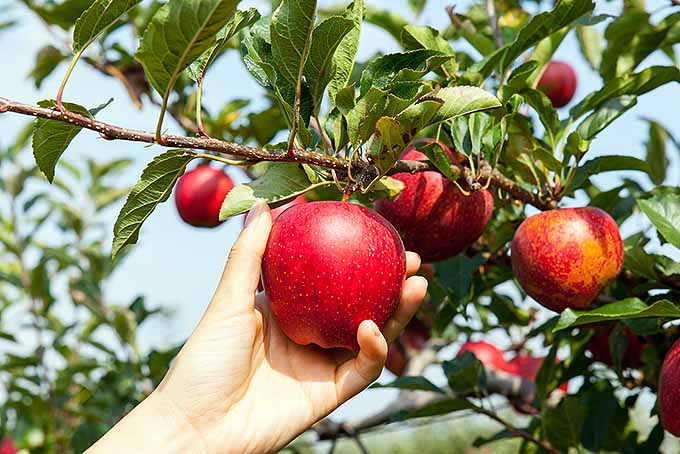
Other sources, like the chefs at Cook’s Illustrated and Serious Eats, also recommend parcooking the cut apples to activate their pectin, the gelatin-like substance found in apples and some other fruits that, when activated by heat and sugar, firms up.
This parcooking step can make apples that tend to bake up softer stay a little firmer during the baking process – just another way to adapt the apples whose flavors you love (or that you happen to have on hand).
And one last tip when considering the best way to maximize apple flavor in pies, pastries, strudels, and some other dishes: consider amping up the apple by adding a spoonful or two of boiled cider to your recipe.
This is cider that’s been slowly evaporated a la maple syrup, concentrating that flavor into an intensely delicious liquid. It’s amazing as a glaze for meats or in cocktails, too.
The List
Without further ado, here’s a list of most, if not all, of the apple varieties you’re likely to encounter, whether in your CSA box, at the supermarket, at the farmers market, or at a pick-your-own orchard.
Regional availability may vary.
Supermarket Standbys
Empire
This cross between McIntosh and Delicious has a fruity, floral flavor and an excellent resistance to bruising. Good for eating fresh, cooking, hard cider, or drying.
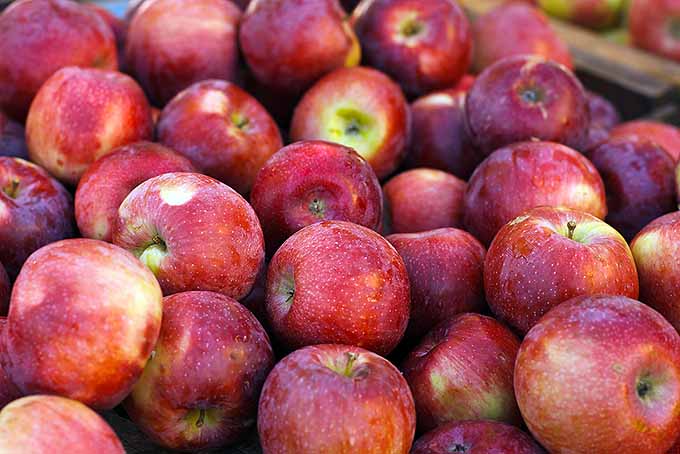
Fuji
This Japanese hybrid is descended from the clothes-free emperor of supermarket apples, Red Delicious. But its flavor and texture are sweet and crisp rather than bland and mealy.
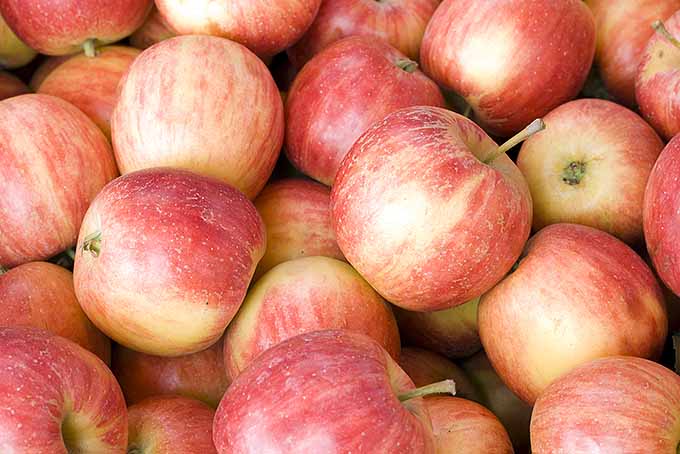
Check your farmers market for early-ripening sub-types like September Wonder. Good for eating fresh and making juice.
Gala
A Golden Delicious hybrid that hails from New Zealand, one of the country’s most popular apples also has one of the best chances of being tasty no matter where you buy it.
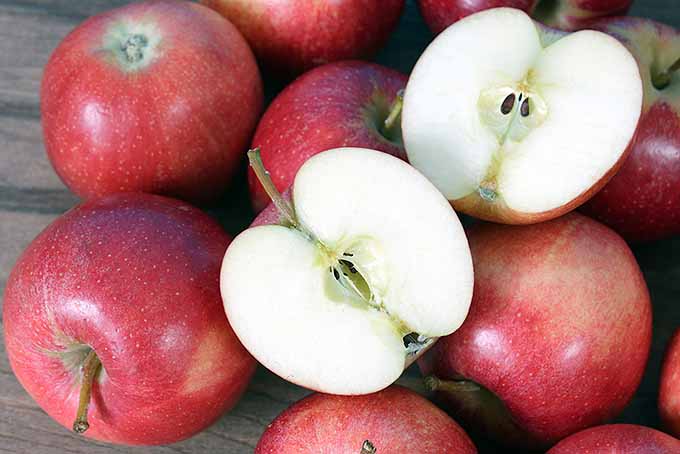
Sweet, with a pear-like flavor when eaten fresh-picked. Good for eating fresh and drying.
Golden Delicious
Look for gold-green specimens, which indicates that the fruit was picked when ripe, not immature (and still green).
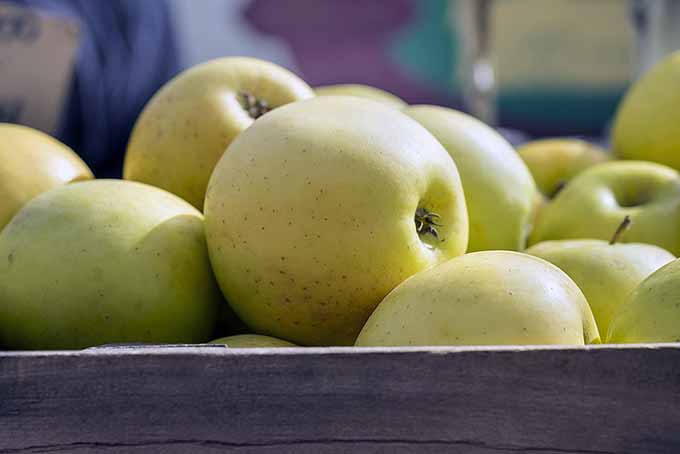
Sweet-tart, smooth, and very versatile. Good for eating fresh, cooking, juicing, or drying.
Granny Smith
With tough skin and tart flavor, I’m not sure I agree with the general consensus that this is a tasty eating apple – rather than out of hand, perhaps it’s best to use it in conjunction with sweeter accompaniments or ingredients.
It’s a perfect ingredient in our recipe for kale salad that balances beautifully with toasty walnuts, bright grapefruit, and red onions.
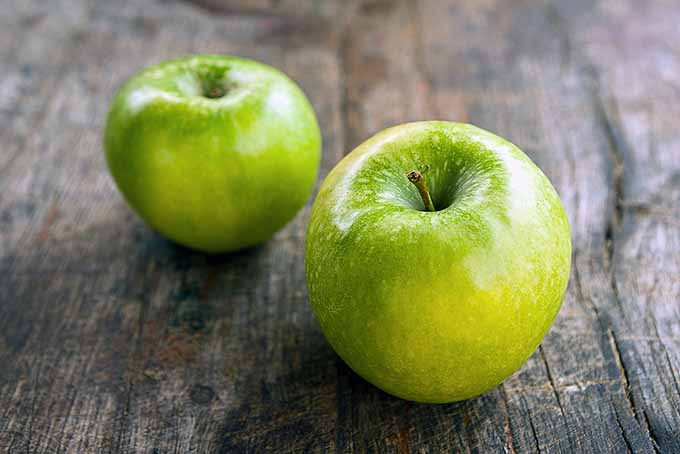
But it is one of the classic baking apples. Good for eating fresh, cooking, hard cider, and drying.
McIntosh
Bright white flesh and a vinous (wine-like), sweet flavor make this apple super popular.
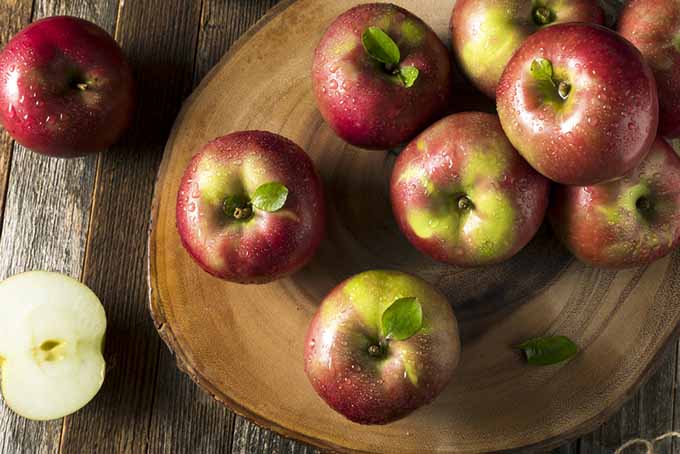
But beware mealy specimens when you’re not shopping from a trusted source. Good for eating fresh, cooking, and drying.
Pink Lady
Also known as Cripp’s Pink, this bright, sweet, candylike variety hails from Australia.
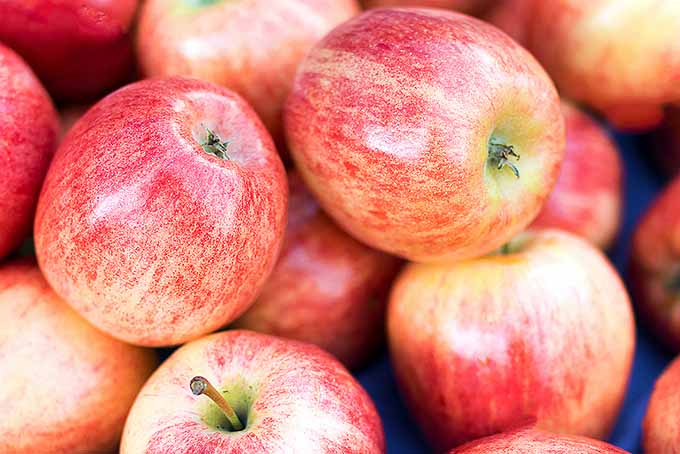
Its compact size makes it the perfect snacker. Good for eating fresh and juicing.
Farmers Market Favorites
Where I live, you’re likely to find some of these hybrids and classic apples at orchards’ farm market stands alongside the occasional regional heirloom, and perhaps some unique cultivars of the Supermarket Standbys (see below).
Buying direct from a grower will almost always lead to better flavor, fresher texture, higher overall quality, and wider variety.
Cortland
This McIntosh hybrid has a sweet flavor that’s winelike, yet refreshing. Good for eating fresh, cooking, juice, and drying.
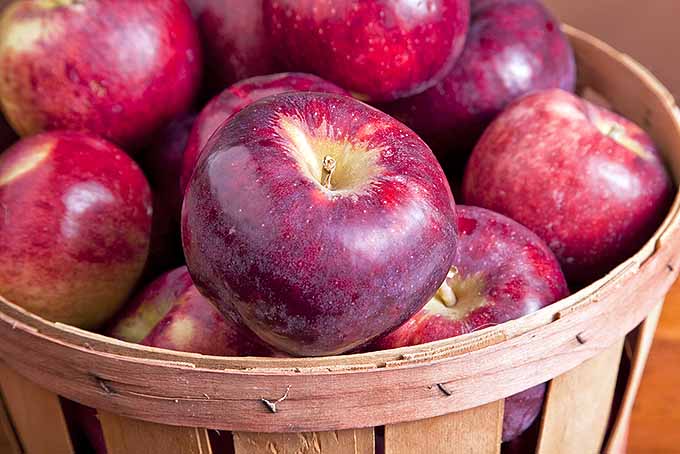
Honeycrisp
This hybrid of several types, from the berrylike Keepsake to Northern Spy, is the apple world’s current superstar fruit, bred in Minnesota to grow well in colder climates. Not great for baking, but this variety does make for an excellent applesauce.

Read more about the Honeycrisp apple in our informative post. Good for eating fresh, juicing, and drying.
Idared
A Jonathan hybrid, Idas have a honeylike, sweet-tart flavor and can keep in cold storage for up to 6 months. Good for eating fresh, cooking, or drying.

Jonagold
Jonathan is crossed with Golden Delicious for a big, delicious fruit with a sharp yet honeylike flavor. Good for eating fresh, cooking, juicing, making hard cider, and drying.
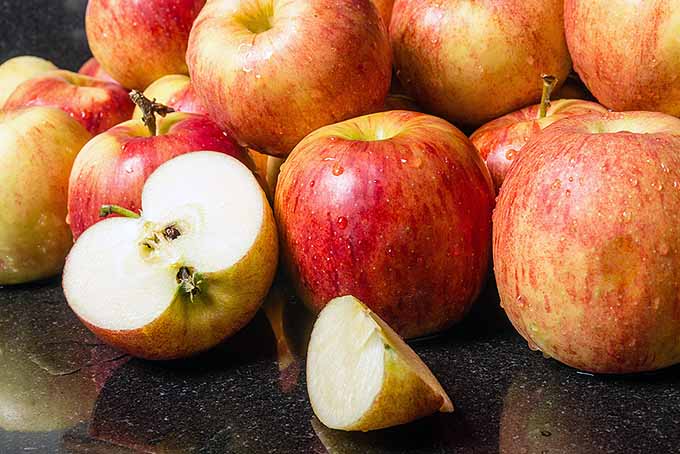
Jonamac
McIntosh crossed with Jonathan makes for a firm, crisp apple with sweet-sharp flavor and red berry notes. Good for eating fresh and drying.
Jonathan
Parent of Jona- varieties, like the two above, with a refreshing sweet-sharp flavor and vinous juice. Good for eating fresh, cooking, and drying.
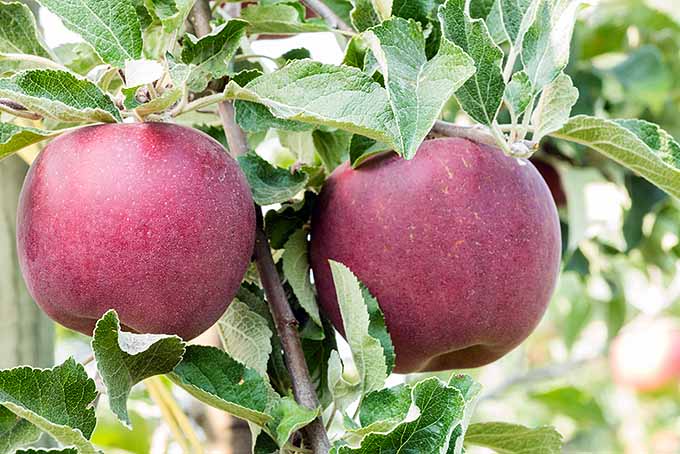
Red Delicious
Notice I didn’t include this apple in the Supermarket section, although that’s where you’re most likely to find it.
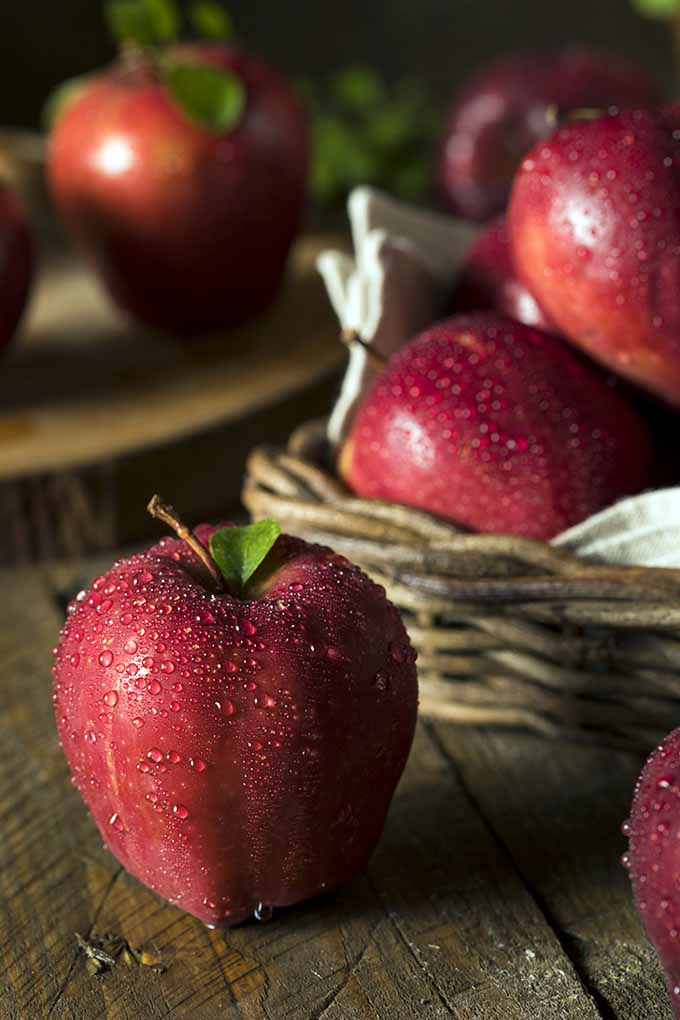
Avoid wasting your money on mass-market fruits at all costs – but the ones you buy direct from the grower at a farmers market, farm store, or pick-your-own orchard are worth trying.
Heirloom Varieties
The origins of these apples date as far back as the seventeenth century, and their parentage may not be known. Often hard to find fresh, your best bet is growing your own – or befriending a fruit farmer who’s looking to expand their selection.
Arkansas Black
A possible sport (or seedling) of Winesap, this apple is known for the deep red of its skin, which darkens the longer it’s stored, and its extremely firm flesh.

Tart and tangy, with good keeping qualities. Good for eating fresh, cooking, hard cider, juice, or drying.
Arlet
Also known as Swiss Arlet, I’ve only seen this variety in my area over the past few years, as grown by the Wenk family at Three Springs Fruit Farm, deep in south central Pennsylvania’s apple country. (If you’re in Maryland, D.C. or Philly, you can get your hands on their apples at farmers markets.)
The flavor is floral, the juice bright and nectarlike, the flesh snappy. Good for eating and cooking.
Cox’s Orange Pippin
This variety is considered the gold standard for flavor among experts on this sort of thing.

A UK heirloom, this variety can currently be found on at least 30 different orchards throughout the US, mostly in the Northeast. Good for eating, cooking, juicing, making hard cider, and drying.
Northern Spy
This New York variety was first discovered in the early nineteenth century. Its juicy, mildly sweet flesh stays crisp even after weeks or months in cold storage.
Good for eating fresh, cooking, juicing, or drying.
Rambo
This French heirloom is one of the earliest summer apples, along with Gingergold. Tart and crisp, with a green skin. Good for eating, cooking, and drying.
Smokehouse
A Pennsylvania heirloom (and one of my personal faves), this crisp, craveable variety has a bright, sweet-tart, and faintly spiced flavor.
I get mine from Beechwood Orchards in south central Pennsylvania. Good for eating, cooking, and drying.
Blushing Bakers
These apples are sometimes unfairly consigned to use in cooking and baking – but they’re much more versatile than we tend to give them credit for. Fresh, quality specimens of any of these varieties will make for great eating out of hand.
Braeburn
Crisp, juicy, and complex, this apple doesn’t get a lot of credit. But it’s one of the top 5 grown in Washington State, big-league apple country.
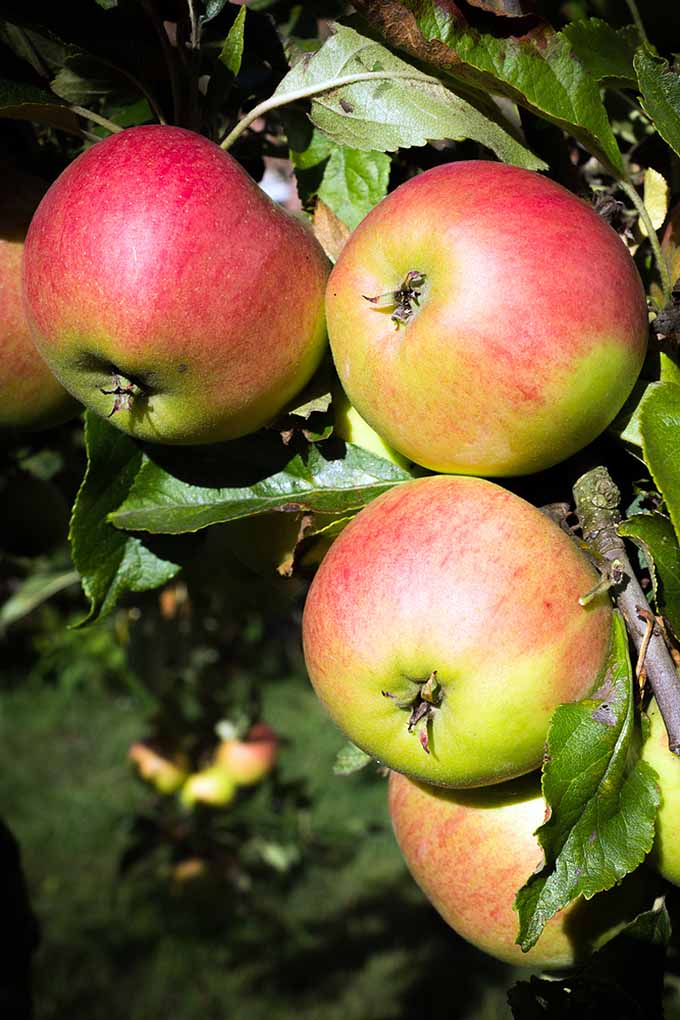
Crisp but not too hard, with a pearlike flavor that deserves a second look. Good for eating fresh, cooking, juicing, or drying.
Mutsu
Also known as Crispin, this Japanese hybrid looks like a greener, outsized version of Golden Delicious. But the flavor is more pronounced, and spicier, than its parent.
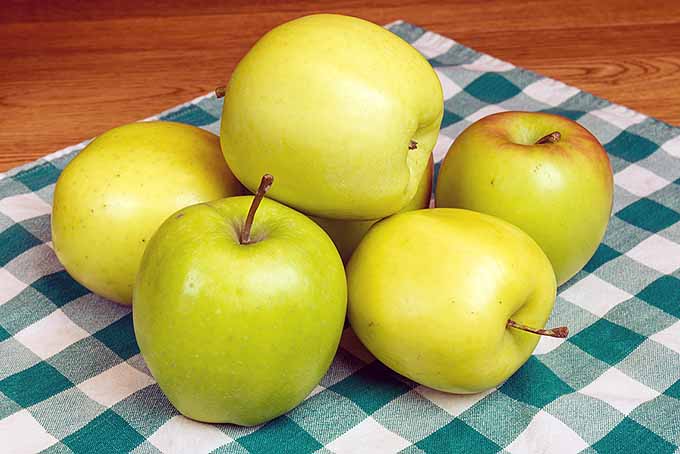
Delicious on its own, but it’s also one of my favorites for pies and pastries. Good for eating fresh, cooking, juicing, or drying.
Rome Beauty
This Ohio-born apple is almost always classified for cooking only. But give sweet, sharp, aromatic Romes sourced in season from your local orchard a chance before consigning your stash to pie.
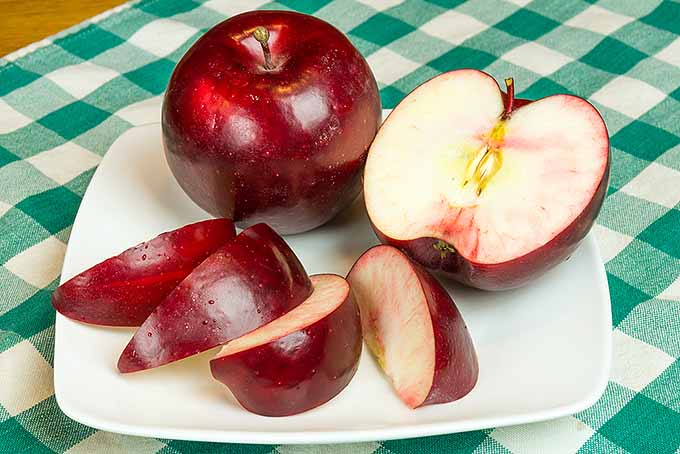
Holds its shape particularly well. Good for cooking and drying.
Winesap
A classic American heirloom apple with a sweet-sharp flavor.
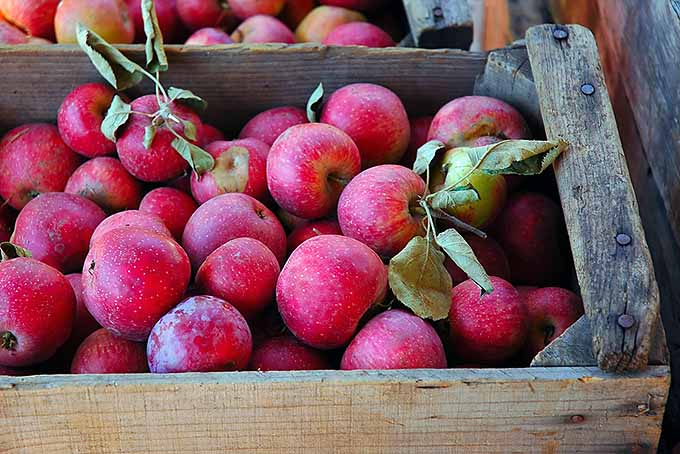
Look for the Stayman Winesap, a descendant, for a sweeter flavor. Good for eating fresh, cooking, juicing, making hard cider, or drying.
York Imperial
This Pennsylvania native tends to have a trapezoidal tilt to its shape, with crunchy, pale golden flesh and a sweet, lightly tart flavor that gets sweeter the longer it’s stored.
Bakes up beautifully, but it’s one of my personal favorites for snacking. Good for eating fresh, cooking, making hard cider, and drying.
The Recipe File
To put these scrumptious suggestions to good use, take a look at our archive of apple-icious recipes. Might we suggest…
- Caramel Apple Scones
- German Apple Butter
- Apple Pear Pie with Cardamom and Ginger
- Baked Apples with Dried Fruit and Nuts
- German Riesling Apple Cake
- Baked Apple Pie Smoothie
- Overnight Cranberry Apple Oatmeal
- Pressure Cooked Maple Cinnamon Applesauce
- Scrumptious Apple Dumplings
An Appetizing Array
There you have it – our guide to how to use just about every apple you’re likely to come across.
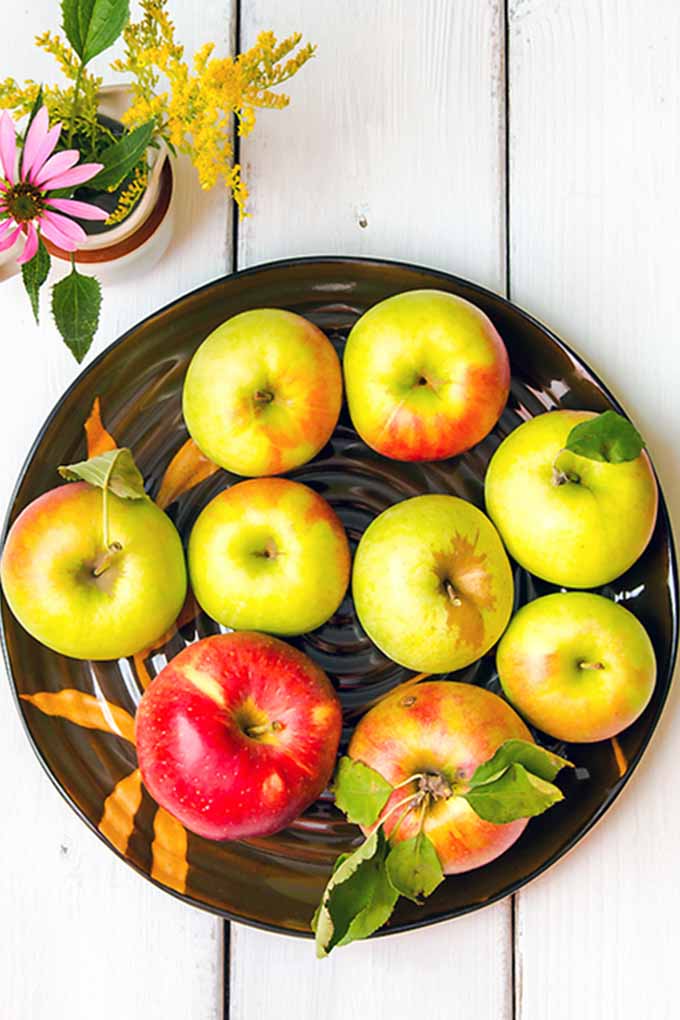
Remember these tips when selecting your apples this fall and winter (and in the spring and summer as well, when early varieties first hit the markets):
- Taste out of hand before you relegate a variety to pastry only.
- Blend varieties for sweetness, tartness, and texture to create the best-tasting baked goods, sauces, and ciders.
- Source direct from the farm whenever possible to get the best flavor and freshest texture, regardless of variety.
Suffering from a little tummy upset after consuming any of these varieties? You may have a sensitivity to FODMAPs. Read our article to learn more about following a low FODMAP diet, so that you can eat healthfully and happily.
What are your favorite apple varieties for snacks, pies, and other preparations? What recipes do you love to make with apples each fall and winter?
Is there a unique or rare apple available in your region that you love? Tell us about it in the comments!
Photo credits: Shutterstock.
About Alex Jones
Alex Jones is a local food consultant and writer based in Philadelphia. Evangelizing about local food is second nature to Alex, whether she’s working an artisan cheesemaker’s farmers market stand or developing growth strategies for her favorite small-scale artisans. Her favorite areas to work in currently are the artisan cheese and pastured meat supply chains. When she’s not working, Alex spends her time managing her usually-overstuffed fridge, growing vegetables, foraging for fruits around the city, playing tuba in a disco cover band, and hanging out with her partner Dr Thunder, Philadelphia’s karaoke superhero, and their two cats, Georgia and Li’l Mama. Alex’s favorite food is some kind of cheese on some kind of bread.



